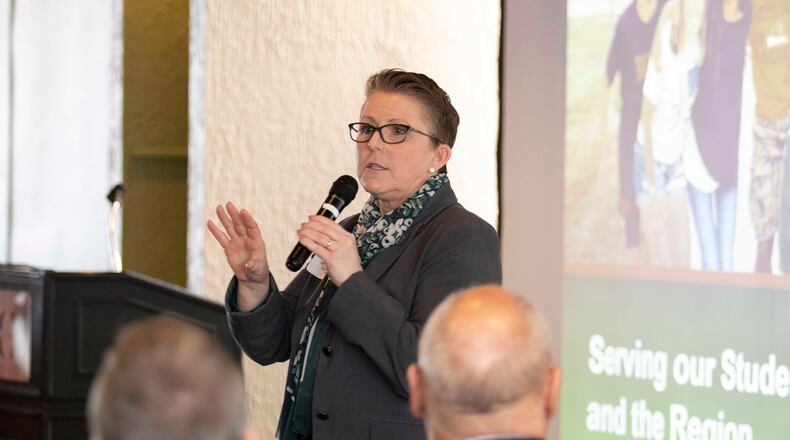Edwards was named president of Wright State late in 2019, as the university struggled to emerge from several years of budgetary, legal and workforce traumas. The university today has about 12,500 students, down from about 18,000 in 2016. About 2,000 of today’s students are graduate students.
WSU trustees slashed about $31 million from the school’s budget in 2017. That wasn’t enough, and the school then cut spending by some $53 million in fiscal 2018.
RELATED: New WSU president aims to rebuild trust
Further, Wright State has a student retention rate of only 64 percent from the freshman to sophomore academic years — a number Edwards said is too low.
“We have to figure out how to narrow that gap,” she said.
A new day is here, she maintained. “We are not going anywhere,” she said. “We are open for business.”
Wright State remains of unique importance to the region, with 84 percent of graduates remaining in the area. The link between Wright State and Wright-Patterson Air Force Base — Ohio’s largest single-site employer with more than 30,000 military and civilian employees — is especially strong, Edwards said, with 2,800 WSU graduates working in one base unit alone, according to Edwards.
Edwards noted that she has already spoken with many of the listeners in her chamber audience about their workforce needs.
“I need to know: What are you looking for?” she said. “What do you need? Do I have a program? Do I need to create a new program? Why is there not an educated workforce for you to gather workers from?”
Wright State announced this week that it is creating a new college, its first in 35 years, focusing on health care and education.
“One of the key workforce demands in this area is health care,” she said. “None of us can actually meet that demand right now — especially in nursing. We can’t produce enough nurses between Sinclair (Community College), us, UD (University of Dayton), Clark (State Community College), you name it. We just can’t produce enough.”
About the Author

